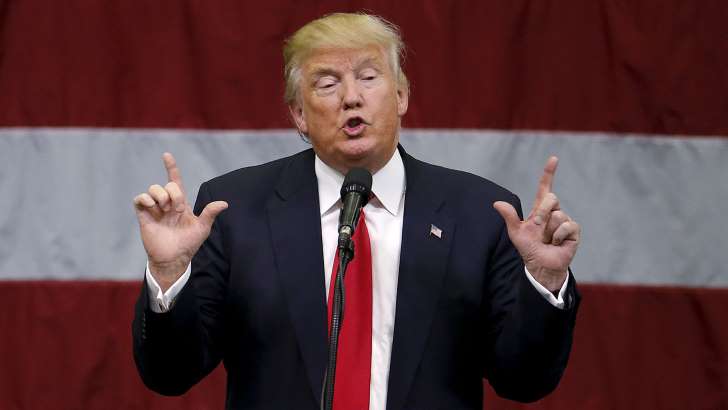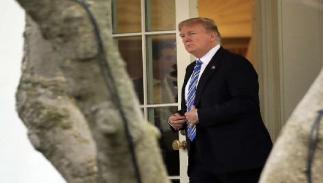May 24, 2016
A claim central to Donald Trump’s presidential campaign has been his assertion, over and over, that he is bringing hordes of new voters into the Republican Party. He’s claimed that Democrats are crossing party lines to vote for him and that people who have never voted in the past are signing up as Republicans in order to back his candidacy.

May 24, 2016
A claim central to Donald Trump’s presidential campaign has been his assertion, over and over, that he is bringing hordes of new voters into the Republican Party. He’s claimed that Democrats are crossing party lines to vote for him and that people who have never voted in the past are signing up as Republicans in order to back his candidacy.

U.S. Republican presidential candidate Donald Trump speaks at a campaign event in an airplane hanger in Rome, New York April 12, 2016.
It’s a story that, on its face, looks reasonable. Turnout has been extremely high in this year’s Republican primary, which could at least plausibly be tied to new voters coming into the GOP fold in response to Trump’s insurgent candidacy. It’s also colored the way Trump talks about his campaign and its relationship with the GOP and its establishment.
While Trump has said that he looks forward to uniting Republicans under his banner, he also frequently reminds the GOP that there are elements of the party – like his closest competitor in the primary, Texas Sen. Ted Cruz – whose support he isn’t interested in. He justifies this with his assertion that all the new Republicans he has created will outweigh the loss of a small number of miffed former insiders who cannot support him.
However, new findings from GOP-leaning research and polling company Optimus strike at the underpinnings of Trump’s claim. Researchers at Optimus examined voter records in two key battleground states and determined that there is little evidence to support the idea that high levels of participation in the primary election means many new voters will be casting ballots in November when Trump is expected to tee off against likely democratic nominee Hillary Clinton.
In Virginia, for example, generally viewed as a key battleground state, turnout for the 2016 Republican primary was nearly four times higher than it was in 2012. But when Optimus looked at voters at the individual level, they found that more than 90 percent of those who turned out were likely to have voted in general elections in the past. And much of the remainder were people who had either not been old enough to vote in previous elections, or who had recently moved to the state.
Only about 5.7 percent of the voters were eligible to vote in previous general elections but did not. That doesn’t even come close to explaining the increased voter participation.
“When we step back and look at this, it looks like the record primary turnout we saw in this election wasn’t new voters coming out to join the Republican party, it looks like they are simply general election voters who don’t typically show up in primaries,” Optimus found. “So it looks like there is not a large swath of new voters who flooded the elections in the primaries that are going to flood the polls in the general election: they already show up to general elections.”
While 5.7 percent is a non-trivial number in a close election, they point out that in Virginia, it equates to about 58,000 votes – which would not have been nearly enough to overcome Mitt Romney’s 149,000-vote deficit in the state when he lost to Barack Obama in 2012.
Optimus also dismissed the possibility that much of the surge in Republican primary participation was due to “crossover” Democrats pulled into the party by Trump. “The vast majority of the voters who flooded into the Virginia Republican primary were not only voters who already show up to general elections, but voters who are likely to support Republican candidates when they do show up.”
When Optimus applied the same analysis to the state of Ohio, the results were largely similar. While Ohio didn’t see a surge of new primary voters on the same scale as Virginia, it was still considerable, and was mostly comprised of people who would be likely to vote in the general election anyway. About 5.9 percent of the voters were truly new to the process — again, not representative of enough voters to swing the result in 2012.
“All this is to say that the evidence says that the GOP is not really seeing an influx of new voters, or a massive influx of cross-over voters, but rather an engaged party particularly interested in this election cycle,” the study concludes.
Left unsaid by Optimus is that part of the high level of engagement in the primary may well have been driven in part by Republicans opposed to Trump’s candidacy. While their engagement drove them to the voting booths in the primaries, if it was motivated by dislike of Trump, it may have the opposite effect in November now that he is the party’s presumptive nominee.
Courtesy: Fiscal Times
















































































































